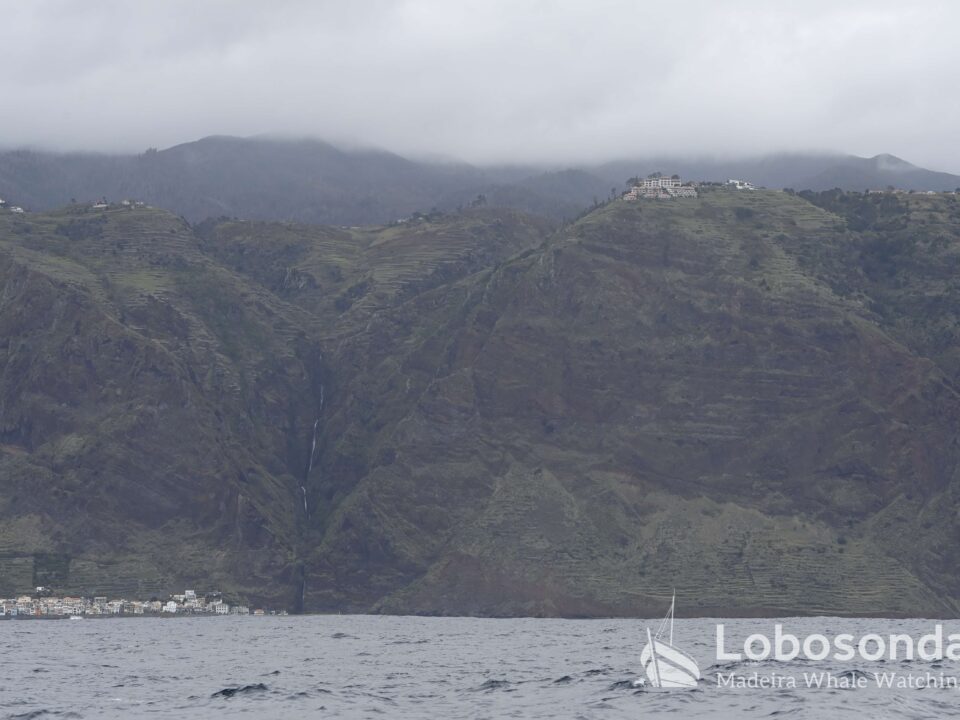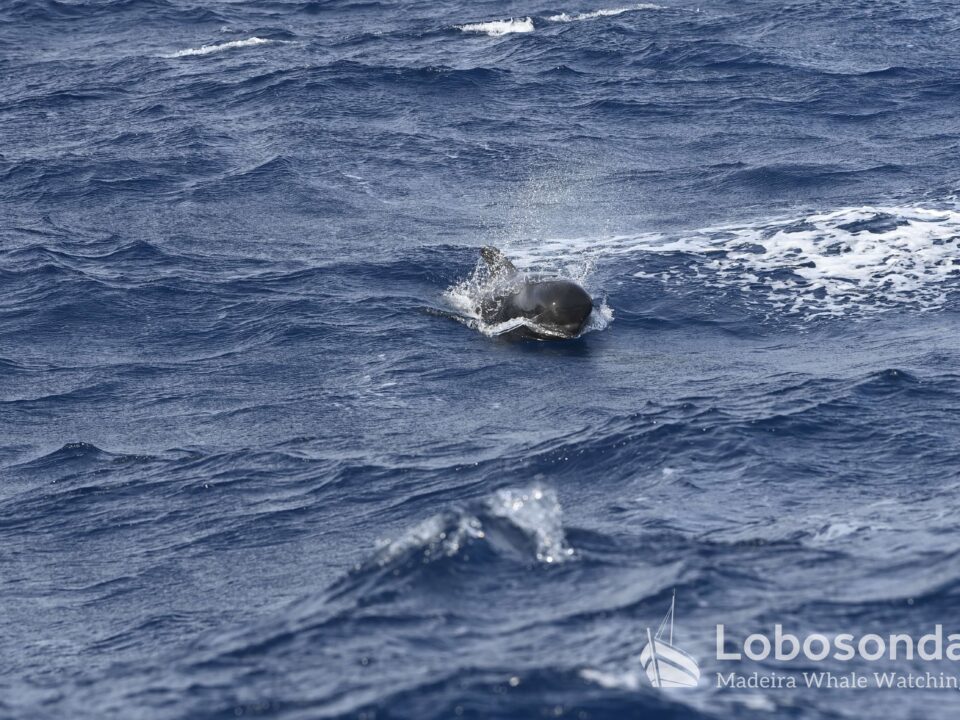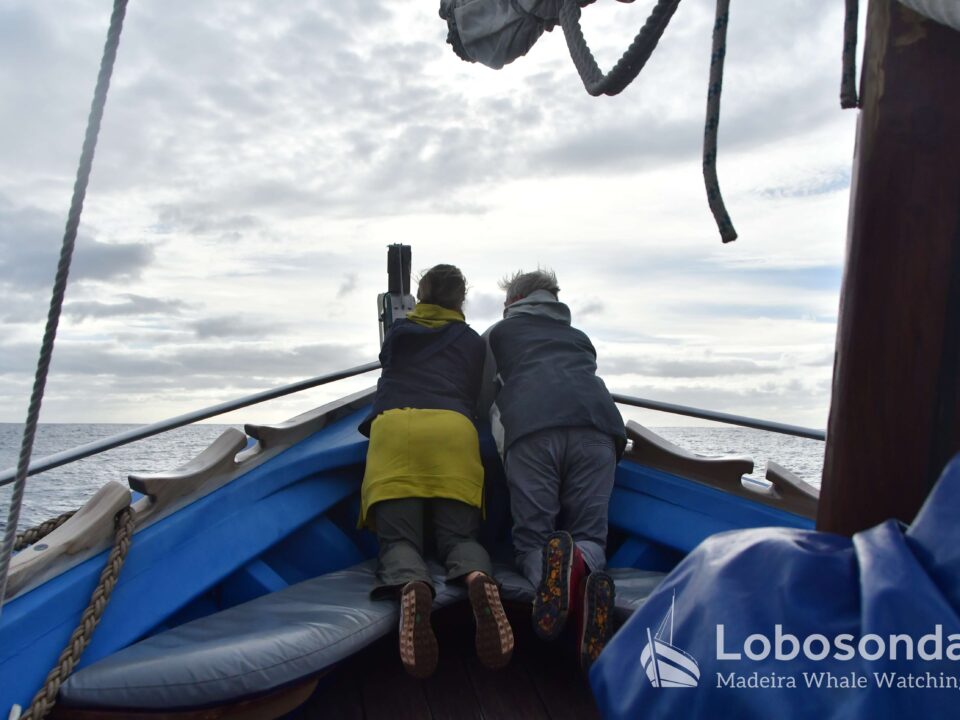
27.09.2019 – Harmony
October 7, 2019
30.09.2019 – Adrift at sea
October 9, 2019The beautiful Madeiran archipelago enjoys countless visits from a variety of marine species but some selected groups of animals tend to stick around a little longer and are seen much more frequently than others. Today we were able to enjoy encounters with Bottlenose dolphins (Tursiops truncatus) and Short-finned pilot whales (Globicephala macrorhynchus), which are both toothed whale species that show a high site fidelity to the islands waters. During the first Bottlenose dolphin sighting on the Stenella’s midday trip I had a little moment of joy; I finally recognised an individual among the small pod of around 20 animals with absolute certainty.
I had been looking for this dolphin for a while after I had an encounter with it during a trip in Porto Moniz in February, before seeing the animal again that same week shortly afterwards. With the knowledge that many Bottlenose form part of a local resident community, I kept searching for the animals characteristic features; it’s distinctly nicked fin with a white tip, its highly pronounced melon and the deep, visible scar on the left side of its beak. The dolphin also displayed its signature behaviour that was seen on all sightings with this animal including todays: a trail of air bubbles. It sure is a fantastic feeling to recognise an animal so easily out at sea but, even the most seasoned whale-watchers need to confirm sightings through photographic data.
While we are on the subject; photos of the animals are super important for biologists studying the population dynamics of these highly mobile creatures. Photo identification catalogues help scientists track the movement of and associations amongst different species. We know for instance that Short-finned pilot whale clans move as a fairly fixed matriarchal units and that 4 of these clans continuously return to Madeira, making them residents. The Madeiran Bottlenose dolphin community on the other hand is very fluid in structure with a continuous and random recruitment of new individuals.
One specie we see all year round but whose relationship to the islands waters we know relatively little of are the Sperm whales (Physeter macrocephalus). Madeiras geographic position means that we can usually expect matriarchal female groups of these gentle giants since most of the young bulls are assumed to move to higher latitudes in summer to feed. Occasionally, however, we also meet large solitary bulls which, despite their enormous dimensions, are quite shy in nature and difficult to approach. This afternoon, however, both our boats managed to enjoy a sighting with a 15m giant, who was peacefully resting at the surface before he lifted his mighty fluke and plummeted into the abyss. Both our guides managed a fluke photo which will definitely prove a great scientific contribution to understanding more about the transequatorial migration of these magnificent creatures. Who knows, maybe this specific individual will return and our crew may recognise him at sea, as we did with todays Bottlenose individual…
By Paula Thake
Sightings of the day
Ribeira Brava
10:00 Short-finned pilot whales
15:00 Bottlenose dolphins, Short-finned pilot whales, Sperm whale
Stenella
12:00 Bottlenose dolphins, Short-finned pilot whales, Loggerhead turtle
15:30 Bottlenose dolphins, Short-finned pilot whales, Sperm whale
















































